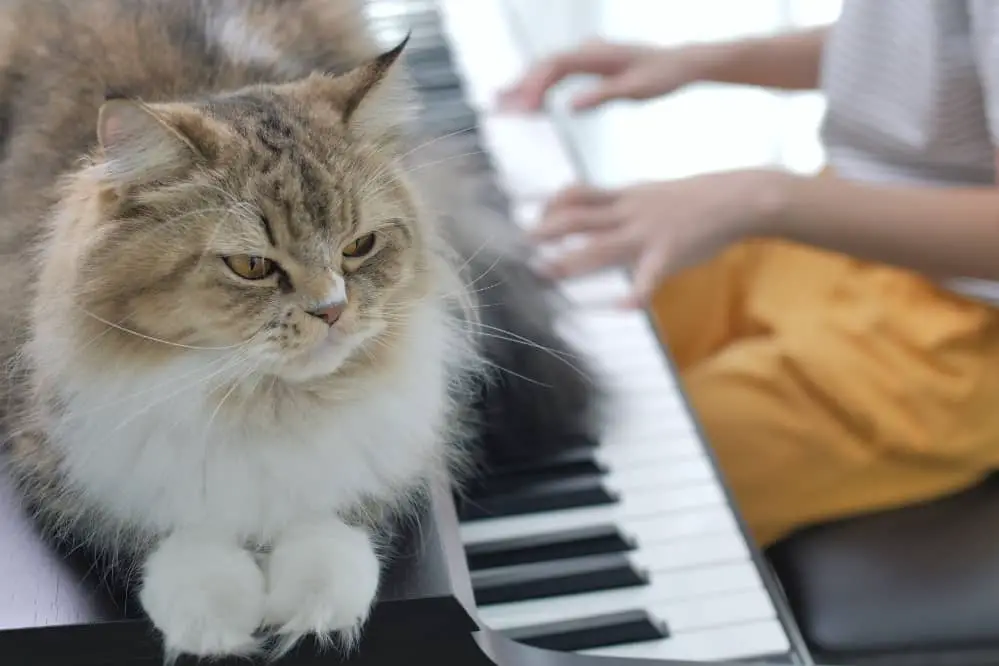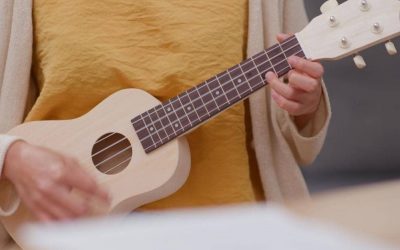One of the most challenging things about owning a cat if you also own a piano is figuring out how to keep them off the piano. Cats love to jump up onto any high surface, think kitchen countertops, wall shelves, and pianos. Usually, their jumping wouldn’t cause a big problem, but their claws can do unbelievable damage to the piano’s surface. Cats also love crawling into tight spaces, which pianos also provide.
1. Invest in a Good Piano Cover
Investing in a quality cover is the best thing you can do to fully protect your piano. The cover itself doesn’t stop cats on pianos, but it will protect the surface from getting scratched. When selecting a quality cover, if you have cats, you want something a little more durable than just a dust cover. The cover shouldn’t be easily torn. It needs to repel liquids and offer good threading.
Don’t just purchase a cover to go over the top of the piano. The claws on your cats aren’t the only thing you will need to protect your piano from. Cats are known for their shedding, which is at its worst during the hot summer months. If cat hair enters the piano, it can affect the keys. Always keep the piano closed and covered to protect it from pet hair.
2. Keep Cats Out of the Room
This is not something that cat lovers will enjoy doing, but often it becomes a necessity. As you are well aware, your cat loves to explore everywhere, which includes the inside of your brand-new piano. The problem is the cat exploring the inside of the piano can lead to lots of expensive damage. For example, imagine the cat’s claws playing with the strings inside the piano, chewing the wooden legs, marking their territory, and more. Keeping the door shut to your piano room will keep cats out.
3. Consider Your Practice Time
Think about your cat’s daily behavior, including when they like to play, their feeding schedule, when they nap, and everything else. You might want to consider shifting your playing time around your cat’s schedule to help limit its exposure to the piano.
Most cats enjoy napping in the early morning and are awake and playful later in the evening. Practicing in the early morning hours when your cat is not as playful means less interference from a curious kitten. If you are playing in the evening when cats often have more energy, consider softer pieces to help not disturb them. Intense or loud pieces will grab their attention, causing them to jump up in your lap to see what you are doing.
4. Keep the Piano Closed
How to keep cat off a keyboard is as simple as keeping the cover closed. This prevents the cats from walking along the keys and making all sorts of unnecessary noise. The rest of the piano should also remain closed because the inside of the piano is fragile. Even though you are keeping it closed, make sure you regularly clean it to prevent any kind of build-up over time.
The casing is where all important parts of the piano are found, including the soundboard, dampers, strings, hammers, and many other fragile parts that help it produce beautiful sounds. A cat climbing in there and poking around creates all kinds of trouble as these parts are easily damaged. Even the smallest damage can result in expensive repairs. For example, if a cat claws the soundboard, the entire piano needs to be rebuilt. Hairs can also get caught in the keys, making them slow to respond.
5. Try Motion Sensor Sprays
While this might not be everybody’s favorite method for training cats, nobody can argue that it isn’t effective. Motion sensor sprays are ideal for keeping cats out of places they don’t belong because they target the cat’s movements. When your cat gets too close, it triggers a loud noise or a spray.
One of the more popular products is SSSCAT, which Petsafe manufactures. Rather than release a spray of water, this product issues a hissing noise meant to startle any cat. When you first start using a sensor to keep your cat away, chances are it’s going to scare your cat to death. Be fully prepared for them to run away from the noise as fast as they can. They will eventually adjust to the noise and learn to steer clear of the area.
6. Provide Your Cats with an Established Play Area
Cats, but especially kittens, love to play, scratch, climb, run, and jump on just about everything. Unfortunately, this also means they will do this to your brand-new piano. By establishing a play area for your cats from the time they are kittens, you can teach them to only climb, scratch, and chew on things in this area.
When establishing this area, you want to include various things that will catch your cat’s interest. Invest in climbing structures, scratching posts, or even build your own things for your cats to play on. If you have the space inside your house, give cats their own room. If you don’t have the room, set aside a small area inside a larger room for them. Ideally, you want to set up a play area in a different room from where you store your piano.
7. Training Techniques to Employ
As you already know, training a cat is not an easy task. Many of you who have already tried to train a cat might even call it impossible. However, given enough time, knowledge, and the proper tools, training a cat can be done. The first thing to know about cats is they require an immediate response. Whether it is good or bad behavior, you need to act immediately so your cat can associate that action with the response. It’s why motion sensor sprays and spray bottles work so well.
Another training technique to employ to keep cats away from pianos is a scat mat. Some of these mats feature blinking lights that alert you how often your cat tries to approach the piano. How the mat works is every time the cat steps on it, a small amount of static is released to deter the cat from continuing forward. The static remains on until the cat is far enough from the area. The levels of static can be adjusted based on how stubborn your cat is.
Ensuring your cat is litter box trained will also help protect your piano. It might not teach it about jumping on the piano, but you won’t have to worry about your cat treating it like their own personal bathroom. You also want to take proactive steps to prevent your cat from spraying to mark the area. Rewarding your cat with treats when it does something correctly is a great way to reinforce positive behavior.
Adjust your cat’s feeding schedule so it is eating while you are playing. If your cat is eating while you are practicing, it is less likely to jump up on your lap looking for attention. Plus, your cat will soon begin to associate you playing the piano with them eating and will head off to the food bowl as soon as you sit down and begin to play.




